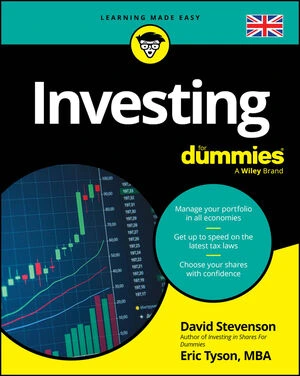Building wealth with ownership investments
If you want your money to grow faster than the rate of inflation over the long term and you don’t mind a bit of a roller-coaster ride from time to time in your investments’ values, ownership investments are for you.
With an ownership investment, you own an interest in some company or other asset that has the ability to generate revenue and profits. Stocks and real estate are examples of ownership investments:
The stock market: Stocks are shares of ownership in a company. If you want to share in the growth and profits of companies like Skechers (footwear), you can! You simply buy shares of their stock through a brokerage firm. However, even if Skechers makes money in the future, you can’t guarantee that the value of its stock will increase.
Some companies today sell their stock directly to investors, allowing you to bypass brokers. You can also invest in stocks via a stock mutual fund (or an exchange-traded fund), where a fund manager decides which individual stocks to include in the fund.
Real estate: Owning and managing real estate is like running a small business. You need to satisfy customers (tenants), manage your costs, keep an eye on the competition, and so on. Some methods of real estate investing require more time than others, but many are proven ways to build wealth.
Generating income from lending investments
Besides ownership investments, the other major types of investments include those in which you lend your money. Examples of lending investments include the following:
- Suppose that you keep some money in a bank, either locally or online — most likely in a checking account but perhaps also in a savings account or certificate of deposit (CD). No matter what type of bank account you place your money in, you’re lending your money to the bank.
- You can also invest your money in bonds, another type of lending investment. When you purchase a bond that’s been issued by the government or a company, you agree to lend your money for a predetermined period of time and receive a particular rate of interest. A bond may pay you 4 percent interest over the next ten years, for example.
An investor’s return from lending investments is typically limited to the original investment plus interest payments. If you lend your money to a company through one of its bonds that matures in, say, ten years, and the company triples in size over the next decade, you won’t share in its growth.
The company’s stockholders and employees reap the rewards of the company’s success, but as a bondholder, you don’t; you simply get interest and the face value of the bond back at maturity.
Many people keep too much of their money in lending investments, thus allowing others to reap the rewards of economic growth. Although lending investments appear safer because you know in advance what return you’ll receive, they aren’t that safe.
The long-term risk of these seemingly safe money investments is that your money will grow too slowly to enable you to accomplish your personal financial goals. In the worst cases, the company or other institution to which you’re lending money can go under and stiff you for your loan.
Diversifying: A smart way to reduce investment risk
Diversification is one of the most powerful investment concepts. It requires you to place your money in different investments with returns that aren’t completely correlated.
Now for the plain-English translation: With your money in different places, when one of your investments is down in value, the odds are good that at least another is up.
To decrease the odds that all your investments will get clobbered at the same time, put your money in different types or classes of investments. The different kinds of investments include money market funds, bonds, stocks, real estate, and precious metals. You can further diversify your investments by investing in international as well as domestic markets.
You should also diversify within a given class of investments. For example, with stocks, diversify by investing in different types of stocks that perform well under various economic conditions. For this reason, mutual funds and exchange-traded funds, which are diversified portfolios of securities, are highly useful investment vehicles. You buy into funds, which in turn pools your money with that of many others to invest in a vast array of stocks or bonds.
You can look at the benefits of diversification in two ways:
- Diversification reduces the volatility in the value of your whole portfolio. In other words, when you diversify, you can achieve the same rate of return that a single investment can provide but with reduced fluctuations in value.
- Diversification allows you to obtain a higher rate of return for a given level of risk.






